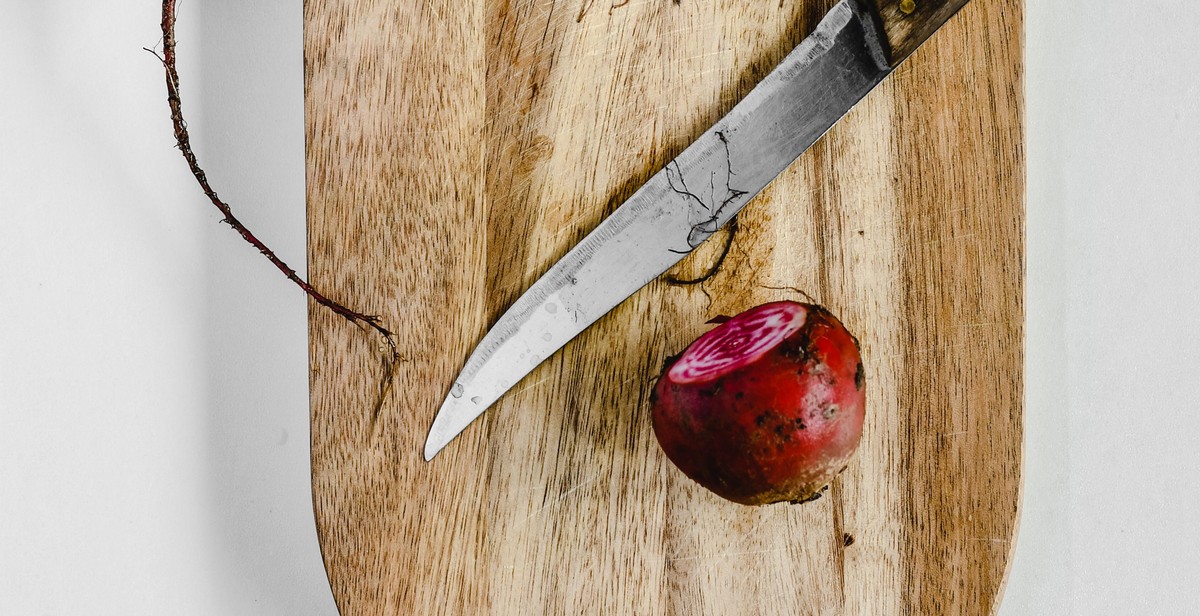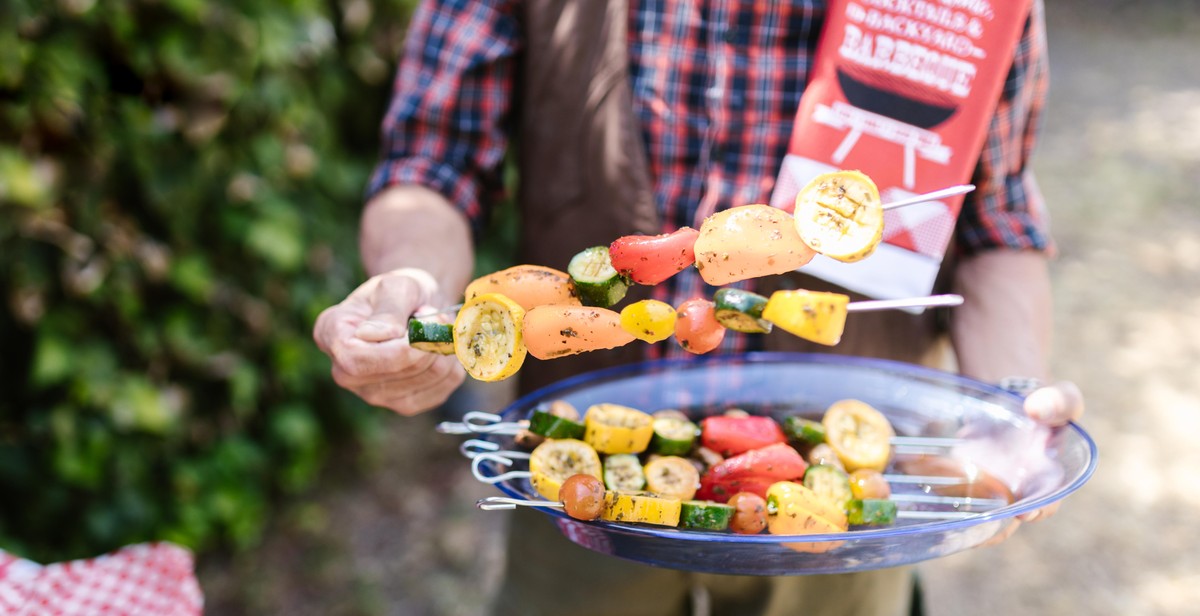How to Grill Vegetables for Delicious and Nutritious Sides
Grilling vegetables is a delicious and nutritious way to add some variety to your meals. Not only do grilled vegetables taste great, but they also retain more of their nutrients than when cooked using other methods. Grilling vegetables is also a great way to incorporate more plant-based options into your diet, and it’s a perfect choice for vegetarians and vegans.
Why Grill Vegetables?
Grilling vegetables is a great way to add flavor and texture to your dishes. Grilling caramelizes the natural sugars in vegetables, creating a slightly sweet and smoky flavor that is hard to resist. Plus, grilling gives vegetables a slightly charred exterior, which adds a satisfying crunch to every bite.
Another advantage of grilling vegetables is that it’s a low-fat cooking method. Unlike frying or sautéing, grilling doesn’t require added oils or fats, making it a healthier option for those watching their calorie intake.
Which Vegetables are Best for Grilling?
Almost any vegetable can be grilled, but some are better suited for grilling than others. Vegetables like bell peppers, zucchini, eggplant, and onions are all great choices for grilling. These vegetables have a firm texture that holds up well on the grill and they also have a high water content, which helps them cook evenly.
Other great options for grilling include asparagus, corn on the cob, and mushrooms. These vegetables are all easy to grill and have a unique flavor that is enhanced by grilling.
| Vegetables that are great for grilling |
|---|
| Bell peppers |
| Zucchini |
| Eggplant |
| Onions |
| Asparagus |
| Corn on the cob |
| Mushrooms |

Why Grill Vegetables?
Grilling vegetables is a great way to add flavor and texture to your meals while also reaping the nutritional benefits of eating more vegetables. Here are some reasons why you should consider grilling your veggies:
Nutritional Benefits
Vegetables are packed with essential vitamins, minerals, and fiber that are crucial for maintaining a healthy diet. Grilling vegetables helps to preserve their nutritional value as the high heat breaks down the cell walls and releases the nutrients. Additionally, grilling vegetables allows you to cook them without adding excess oil or butter, making them a healthier option than other cooking methods.
Flavor
Grilling vegetables adds a smoky and charred flavor that can’t be replicated with other cooking methods. The high heat caramelizes the natural sugars in the vegetables, enhancing their sweetness and creating a delicious contrast of flavors. You can also experiment with different marinades, spices, and herbs to add even more flavor to your grilled vegetables.
Texture
Grilling vegetables gives them a satisfying texture that is both tender and slightly crispy. The high heat of the grill creates a charred exterior while keeping the inside moist and tender. This texture makes grilled vegetables a great addition to any meal, whether as a side dish or as a main course.
Overall, grilling vegetables is a delicious and nutritious way to incorporate more plant-based foods into your diet. Whether you’re a vegetarian or simply looking to add more vegetables to your meals, grilling is a great way to elevate the flavor and texture of your veggies while reaping the nutritional benefits.

Preparing Vegetables for Grilling
Grilling vegetables is a great way to add flavor and nutrition to your meals. However, preparing vegetables for grilling requires some attention to detail. Here are some tips to help you get the most out of your grilled vegetables:
Choosing the Right Vegetables
Not all vegetables are created equal when it comes to grilling. Some vegetables are better suited for grilling than others. Here are some vegetables that are great for grilling:
- Bell peppers
- Zucchini
- Eggplant
- Mushrooms
- Onions
- Corn
When choosing vegetables for grilling, look for firm vegetables with a dense texture. Vegetables that are too soft or watery may not hold up well on the grill.
Washing and Cutting Vegetables
Before grilling vegetables, it’s important to wash them thoroughly to remove any dirt or debris. If you’re grilling vegetables with a tough outer skin, like bell peppers or eggplant, you may want to peel them first.
When cutting vegetables for grilling, it’s important to cut them into uniform sizes so that they cook evenly. If you’re grilling vegetables with a high water content, like zucchini or eggplant, you may want to salt them first to draw out some of the moisture.
Marinating Vegetables
Marinating vegetables before grilling can add flavor and help tenderize them. To marinate vegetables, simply mix together your desired marinade ingredients and coat the vegetables in the mixture. Let the vegetables marinate in the refrigerator for at least 30 minutes before grilling.
Some great marinade ingredients for grilled vegetables include olive oil, balsamic vinegar, garlic, and herbs like rosemary or thyme.
Conclusion
By following these tips for preparing vegetables for grilling, you can create delicious and nutritious sides that will impress your family and friends. So fire up the grill and get ready to enjoy some tasty grilled vegetables!

Grilling Techniques
Grilling vegetables is a great way to add flavor and nutrition to your meals. However, it’s important to use the right grilling techniques to ensure that your vegetables are cooked to perfection. Here are three popular grilling techniques to try:
Direct Heat Grilling
Direct heat grilling involves placing the vegetables directly on the grill grates over high heat. This method is best for vegetables that cook quickly, such as asparagus, zucchini, and cherry tomatoes. To prevent the vegetables from sticking to the grill grates, lightly oil them before placing them on the grill. You can also season them with salt, pepper, and herbs to add extra flavor.
When grilling vegetables using direct heat, it’s important to keep an eye on them to prevent them from burning. Use tongs to turn them frequently and ensure even cooking. Depending on the size and type of vegetable, direct heat grilling can take anywhere from 5 to 15 minutes.
Indirect Heat Grilling
Indirect heat grilling involves cooking the vegetables away from the direct heat source, such as on the cooler side of the grill or using a foil packet. This method is best for vegetables that require longer cooking times, such as potatoes, carrots, and onions. To prepare vegetables for indirect heat grilling, wrap them in foil or place them in a foil packet with oil, salt, and pepper.
When using indirect heat grilling, it’s important to keep the grill lid closed to trap in the heat and smoke. Depending on the size and type of vegetable, indirect heat grilling can take anywhere from 20 to 45 minutes.
Using a Grill Basket or Skewers
Using a grill basket or skewers is a great way to grill smaller vegetables, such as mushrooms, peppers, and onions. A grill basket is a metal basket with holes that allows you to grill vegetables without them falling through the grates. Skewers, on the other hand, are wooden or metal sticks that you can thread vegetables onto for easy grilling.
When using a grill basket or skewers, it’s important to soak wooden skewers in water for at least 30 minutes before grilling to prevent them from burning. You can also season the vegetables with your favorite herbs and spices for added flavor.
| Grilling Technique | Best for Vegetables | Cooking Time |
|---|---|---|
| Direct Heat Grilling | Asparagus, zucchini, cherry tomatoes | 5 to 15 minutes |
| Indirect Heat Grilling | Potatoes, carrots, onions | 20 to 45 minutes |
| Using a Grill Basket or Skewers | Mushrooms, peppers, onions | 5 to 15 minutes |
By using these grilling techniques, you can create delicious and nutritious vegetable sides that are sure to impress your guests. Experiment with different vegetables and seasonings to find your favorite combinations. Happy grilling!

Recipes for Grilled Vegetables
Grilled Zucchini and Squash
Ingredients:
- 2 medium zucchinis, sliced lengthwise
- 2 medium yellow squash, sliced lengthwise
- 2 tablespoons olive oil
- 1 teaspoon garlic powder
- 1 teaspoon dried basil
- Salt and pepper to taste
Instructions:
- Preheat grill to medium-high heat.
- In a small bowl, mix together olive oil, garlic powder, dried basil, salt, and pepper.
- Brush the mixture onto both sides of the zucchini and squash slices.
- Place the slices on the grill and cook for 3-4 minutes per side, or until they are tender and have grill marks.
- Remove from grill and serve immediately.
Grilled Eggplant with Balsamic Glaze
Ingredients:
- 1 large eggplant, sliced into 1/2 inch rounds
- 2 tablespoons olive oil
- 1/4 cup balsamic vinegar
- 1 tablespoon honey
- 1 teaspoon garlic powder
- Salt and pepper to taste
Instructions:
- Preheat grill to medium-high heat.
- In a small bowl, whisk together olive oil, balsamic vinegar, honey, garlic powder, salt, and pepper.
- Brush the mixture onto both sides of the eggplant slices.
- Place the slices on the grill and cook for 3-4 minutes per side, or until they are tender and have grill marks.
- Remove from grill and drizzle with any remaining balsamic glaze.
- Serve immediately.
Grilled Corn on the Cob with Herb Butter
Ingredients:
- 4 ears of corn, husks removed
- 2 tablespoons butter, softened
- 1 tablespoon chopped fresh parsley
- 1 tablespoon chopped fresh thyme
- Salt and pepper to taste
Instructions:
- Preheat grill to medium-high heat.
- In a small bowl, mix together softened butter, parsley, thyme, salt, and pepper.
- Brush the herb butter onto each ear of corn.
- Place the ears of corn on the grill and cook for 10-12 minutes, turning occasionally, or until they are tender and have grill marks.
- Remove from grill and serve immediately.
